#FSYALit: Mormon Representation in YA Lit, a guest post by Sam Taylor
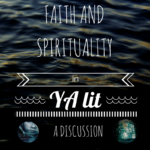 Today, as part are of our ongoing discussion of Faith and Spirituality in YA Literature, we are honored to host Sam Taylor as she discusses Mormon representation in YA literature. You can read all of the #FSYALit Posts here. And if you would like to contribute a post to the discussion, please contact me at kjensenmls at yahoo dot com.
Today, as part are of our ongoing discussion of Faith and Spirituality in YA Literature, we are honored to host Sam Taylor as she discusses Mormon representation in YA literature. You can read all of the #FSYALit Posts here. And if you would like to contribute a post to the discussion, please contact me at kjensenmls at yahoo dot com.
Growing up, I never came across mainstream books that featured Mormon characters. When we were mentioned (and it was just a mention), the representation was almost always negative, often some reference to the long-abandoned practice of polygamy. Now, there were and still are books written by Mormons, for Mormons, published by Mormon niche presses, and sold in Mormon bookstores. But such stores are rare outside Utah. Furthermore, most of these Mormon-published books focused upon either conversion to the Mormon faith or teens strengthening their testimonies of the Mormon faith. These stories appealed less to me because they weren’t the crux of my life. I wanted to find non-preachy books about characters who were Mormon, going to school, and living life with their friends. I wanted books I could find in the school library, that I could share and discuss with friends who didn’t practice my religion.
ADVERTISEMENT
ADVERTISEMENT
One thing I should point out: Today there is no shortage of Mormon authors publishing young adult books for mainstream audiences. Some of these are best-selling authors and well-known names: Shannon Hale. Kiersten White. James Dashner. Allie Condie. Brandon Sanderson. Jessica Day George. Stephanie Meyer. The list goes on. But what’s the pattern here? The majority of Mormon authors publishing with national presses (not the niche-Mormon ones) write fantasy or science fiction stories which do not feature Mormonism. Understand, I’m not trying to knock these authors. It’s encouraging to see so many Mormon writers well-received by the public—proof that there is truly a place for us in mainstream publishing.
But on the other hand, the lack of Mormon characters in any of these stories, even by big name authors, seems to perpetuate the idea that Mormon characters do not belong in mainstream fiction. That our experiences and stories have no place outside of Mormon audiences. Or, as I encountered in my university creative writing classes, that Mormon representation is best accepted if the writer is questioning the Mormon faith, tearing it down outright, or using our faith as the butt of a joke. (Yes, I’m looking at you, Book of Mormon musical.)
The good news: There are a handful of young adult books published by mainstream presses that feature Mormon protagonists. Most of these titles aren’t widely talked about. You have to put forth some effort to find them. But for Mormon teens who wish to see characters like themselves on the page—or for any readers interested in novels featuring Mormon protagonists—here are some options.
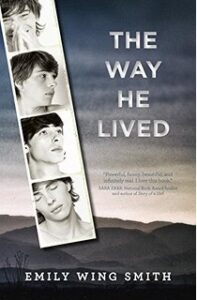 Young adult author Emily Wing Smith has published two novels featuring a Mormon cast. The Way He Lived opens after the funeral of sixteen-year-old Joel Espen, who died of dehydration during a Boy Scout hike gone disastrous. Did he die as he lived, giving so much to others—including the last of his water, when the scouts were lost in the canyon—that there was nothing left for himself? Or is there more behind his death? The novel, told in six points of view, explores the responses of the teens closest to Joel, including his sisters, his best friend, and his almost-girlfriend, and how they try to make sense of his death and their lives without him. In this novel there are some issues brought up regarding Joel that didn’t feel fully resolved to me, but nevertheless I appreciated this book for the diversity of characters Wing depicts—all Mormon, but from different class and ethnic backgrounds, as Mormons are! Some of these characters are more devoted to their faith than others. Some have more questions than others. All of them provide strong, distinct voices and a glance at the ways modern-day Mormon teens live.
Young adult author Emily Wing Smith has published two novels featuring a Mormon cast. The Way He Lived opens after the funeral of sixteen-year-old Joel Espen, who died of dehydration during a Boy Scout hike gone disastrous. Did he die as he lived, giving so much to others—including the last of his water, when the scouts were lost in the canyon—that there was nothing left for himself? Or is there more behind his death? The novel, told in six points of view, explores the responses of the teens closest to Joel, including his sisters, his best friend, and his almost-girlfriend, and how they try to make sense of his death and their lives without him. In this novel there are some issues brought up regarding Joel that didn’t feel fully resolved to me, but nevertheless I appreciated this book for the diversity of characters Wing depicts—all Mormon, but from different class and ethnic backgrounds, as Mormons are! Some of these characters are more devoted to their faith than others. Some have more questions than others. All of them provide strong, distinct voices and a glance at the ways modern-day Mormon teens live.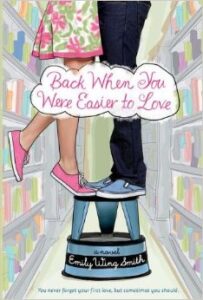
Back When You Were Easier to Love, Wing’s second novel, follows seventeen-year-old Joy as she tries to track down her old boyfriend Zan, who left her and their friends with little explanation and no closure. Her search takes her on a road-trip to California with Zan’s annoying ex-best friend Noah in his old classic car. While this book was a little heavy at times on the co-dependent romance, it’s a fun and humorous read, and I appreciate its depictions of a well-rounded Mormon young woman who loves her faith even as she strives to separate herself from stereotypes.
Hannah Ziebarth, the protagonist of Louise Plummer’s novel A Dance for Three, is just fifteen years old when she discovers she is pregnant. She envisions a happy life with the baby’s father, her boyfriend Milo, but when he rejects her and the child, Hannah is faced with hard questions about herself, her family, and her expectations for the future. In this story, Hannah isn’t actively practicing her Mormon religion, although best friend Trilby, a point of view character in the story, does. Trilby and her mother, along with Hannah’s bishop, become key figures of support for Hannah as she decides the best plan for her baby. This book, I think, might be great to read and discuss alongside Ellen Hopkins’s novel Burned, which I’ll address later in this post.
I really enjoyed the spirited, opinionated voice of Charlotte Edwards in A.E. Cannon’s novel Charlotte’s Rose—a personality that defies the stereotype of Mormon women being meek and subservient to fathers or husbands. This novel, historical fiction set in 1856, follows a group of Welsh converts to the Mormon faith as they leave their home country and travel to Salt Lake City, Utah. When a woman dies along the way giving birth to her baby, and the child’s grieving father refuses to care for the infant, Charlotte takes charge of the child for the rest of the journey. Her decision quickly becomes more than she bargained for, but she finds help along the way from some unexpected friends. (Disclaimer: While Charlotte is thirteen for most of this book, this novel feels more young adult to me than middle grade, with its questions of dealing with first love and what makes one a young woman.)
The last book I’ll address is Burned by Ellen Hopkins. Ms. Hopkins is not Mormon herself, but has written a duology (sequel Smoked) featuring a Mormon protagonist. As Ms. Hopkins is the most widely-known author in this list of books featuring Mormon protagonists, and Burned itself was a New York Times Bestseller, I feel it’s important to include this book in my discussion.
Burned, a novel in verse, tells the story of seventeen-year-old Pattyn Von Stratten, the oldest child in a large Mormon family led by an alcoholic and abusive father. Pattyn’s life is limited to caring for her numerous siblings and dodging the wrath (and fists) of her father. Her future seems restricted to the life dictated by her father and her bishop: becoming subservient to a Mormon husband and bearing him as many children as she physically can. When Pattyn is caught dating a fellow schoolmate who is not Mormon, her family sends her to live with her aunt in rural Nevada.
In an online interview, Ms. Hopkins said this story was inspired by a friend of her daughter’s. She said for research, she conducted interviews with individuals who’ve experienced events similar to those in this novel. I would be lying if I claimed that no abuse of power or families ever occurred among Mormons. We are not immune to these behaviors, as is no other demographic. But the situations depicted in this book are extreme, and many of the claimed Mormon beliefs and practices presented in this novel do not, in fact, reflect Mormonism. I don’t know if these discrepancies are due to research issues or if they are unique to the situation that inspired this story (i.e. Pattyn’s father and church leaders forging their own brand of Mormonism to maintain their absolute power). Please note, I am not saying, “Don’t read this book.” The experiences of the girl who inspired this story should be shared, and her voice is important. And Ms. Hopkins masterfully writes the verse that tells the story. I admired her skill in writing even as I struggled with the depictions on her pages.
Some of the discrepancies within this book are minor but present Mormons as restrictive and small-minded, such as claims that Tolkien’s and Rowling’s writings are “places no upstanding Mormon should go.” Really, my Mormon friends and I grew up with Lord of the Rings and Harry Potter—and we weren’t smuggling those books into our homes. Many Mormons love fantasy. Look again at my list of well-known Mormon authors and what they write. Another small discrepancy: “Good Mormon / girls kept their clothes on” while swimming. Nope, we wear bathing suits. Promise.
ADVERTISEMENT
ADVERTISEMENT
Other discrepancies regarding the Mormon faith in this book were disturbingly large: Domestic abuse is in no way sanctioned, for any reason. Women and children are not doormats for, or the property of, their husbands, fathers, or ecclesiastical leaders. And I don’t know a single Mormon parent who would agree with the following: “A true Mormon / would rather bury a child / than see her lose her chastity.” What?
What bothers me most about the representation in this book is that the situations depicted were never presented as, “this is a case of horrendous abuse perpetrated by people who claim to be Mormon,” but rather, “this is how Mormons—true Mormons—think and behave.” Every Mormon character in this story, with the exception of Pattyn’s younger sister Jackie (a secondary character), is a horrible person. The characters who do offer Pattyn strength and safety were pointedly not Mormon or had left the Mormon religion. Ultimately, Pattyn leaves her religion, too, as the only way to take charge of her life. Burned might be the foremost young adult novel, mainstream published, that features a Mormon protagonist. And it’s not one I can give to teens who yearn to see themselves—their Mormon selves—in a story.
My Mormon faith is not the sum total of who I am, but it’s an essential part of how I identify myself. That was true when I was a teenager, and it’s true for many of the teens I see today in my church. As the call for diverse books continues, I look forward to seeing more young adult books that depict aspects of many religious faiths. I hope that among these are books that feature teenage Mormon protagonists: flawed, complex, well-rounded, but whose faith is more than something to be endured or escaped. I hope for books that show the great diversity within the Mormon church, of ethnicities, of interests, of political beliefs, and how all of these people unite under a shared faith. I hope for books that honestly explore struggles Mormons teens face, with their faith, with their families, with being a teenager in today’s world. I hope for books where Mormon teens draw strength from their faith, and not just shame and struggle.
Most of all, I hope for books that show teens they can be, at once, Mormons and the heroes of their own stories.
Meet Our Guest Poster
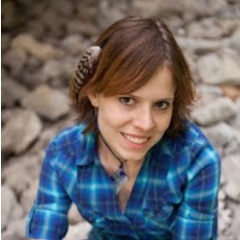 Sam Taylor developed a voracious appetite for YA lit when her teen sisters introduced her to their favorite books. She went on to study young adult literature for her graduate work at Purdue University and even wrote her master’s thesis on personal journeys in YA fantasy. She now writes her own YA fantasy, when she’s not devouring others’ books or playing the violin. She serves as the New Releases Coordinator for the Adventures in YA Publishing blog. Find her on Twitter at @jsamtaylor.
Sam Taylor developed a voracious appetite for YA lit when her teen sisters introduced her to their favorite books. She went on to study young adult literature for her graduate work at Purdue University and even wrote her master’s thesis on personal journeys in YA fantasy. She now writes her own YA fantasy, when she’s not devouring others’ books or playing the violin. She serves as the New Releases Coordinator for the Adventures in YA Publishing blog. Find her on Twitter at @jsamtaylor.
Filed under: Uncategorized
About Karen Jensen, MLS
Karen Jensen has been a Teen Services Librarian for almost 30 years. She created TLT in 2011 and is the co-editor of The Whole Library Handbook: Teen Services with Heather Booth (ALA Editions, 2014).
ADVERTISEMENT
ADVERTISEMENT
SLJ Blog Network
Newbery/Caldecott 2025: Spring Check-In
Ellen Myrick Publisher Preview: Spring 2024 – Cicada, Creston, Diamond, and Eye of Newt
Number Call | Review
It’s Time for More Mock Newbery Suggestions
ADVERTISEMENT


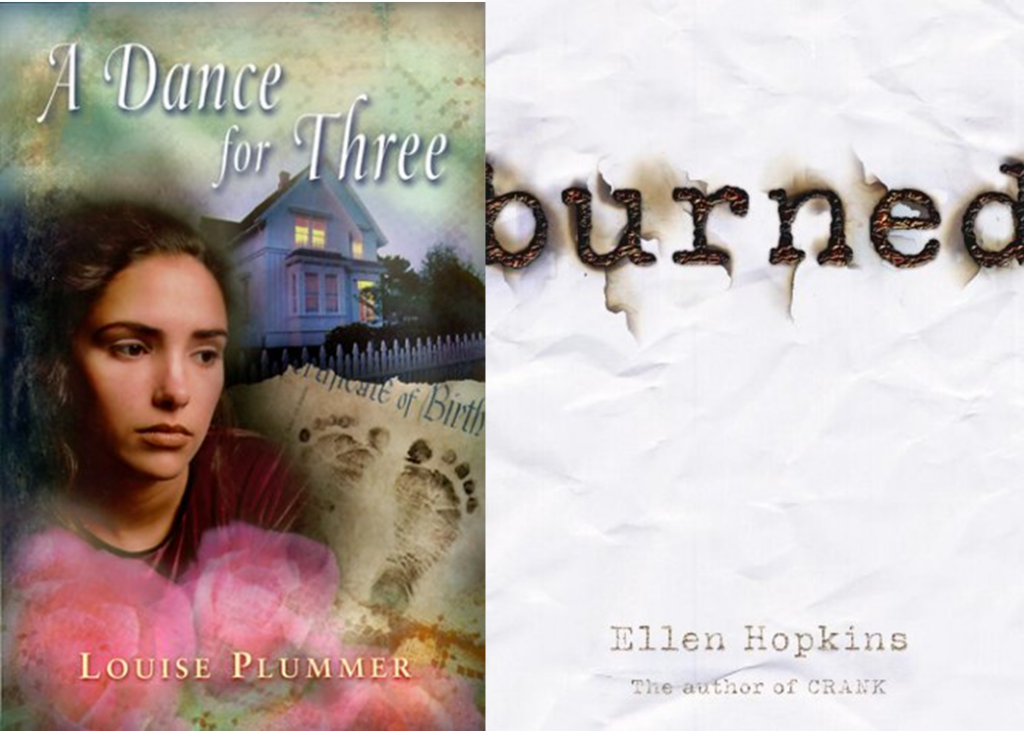






I’m Mormon. Baptized at 8, still go to church semi-regularly.
I read Burn as a teen and I found it to be a fairly accurate portrayal of a number of Mormons. I related hugely. I wore t-shirts and sometimes shorts over my bathing suit when I swam. Modesty, y’know. I had friends who were not allowed to read HP. Who were really only allowed to read/watch church-approved material.
Have you talked to many of your fellow LDS women? I can’t count how many Sisters have told me their stories of priesthood-holding husbands abusing them, and when they finally go to their bishop/branch pres, even stake people, they are blamed for the abuse and the husband faces no discipline, or is maybe sent to the church counseling.
And actually, Mormon leaders have said in the past that it is better to die than basically allow yourself to be raped. I was in YW in the 2000’s and I was taught that my chastity/virtue was the most precious thing I had, even more precious than my life. You’re obviously ignorant of many things in our church.
Mormonism isn’t only the negative stuff (I love Heavenly Mother and our beliefs about pre-mortality, for example), but most of the negative stuff in Burn definitely happens within a number of Mormons’ lived experiences. And I was so relieved to see it portrayed, to see what I had experienced as a Mormon, or what my friends had experienced in those books.
Just goes to show that even within the same religious identity, people’s experiences are vast.
Hello, Hope. Thank you for your thoughts. I am also a Mormon baptized at age 8, and I still actively participate in the church. I grew up in a home with very conservative LDS parents. I too, have experienced joys and many, many struggles from this upbringing.
In my article, please note that I never denied the situations that inspired Ellen Hopkins’ BURNED could have happened. I did not tell people, “Stay away from this book.” I know abuse happens. I know LDS women who were abused by their husbands (men who were both members and non-members). Growing up, I too witnessed and experienced abuse in my own home. BUT … is this because abuse is sanctioned and endorsed by church doctrine, and an implicit part of our faith? Or is it because people (both family leaders and church leaders) make poor choices, DESPITE the doctrine that is the core of our church? Yes, there are failings even among our church leaders. I wish it was not so. But I believe we can do better. I have seen many people live better, as I’ve grown and lived in different parts of the country and talked with more and more members of the LDS church. Being Mormon does not equate to being a victim or an abuser. It does not mean one is a lesser individual. It broke my heart to see Pattyn believe this about herself.
You are right, I am ignorant of many situations in our church. I am only one person in a church of over 15 million members across the world. There is no way any one of us can understand every circumstance and situation that arise for Mormon individuals. This is why we need more than a handful of books depicting Mormon lives and circumstances–the good and the bad. I am not asking for only jolly depictions. I am not sticking my head in the sand. But I do hope for books that show more positive depictions of the Mormon faith, too. One of the things that upset me about BURNED was that I felt the representation was portrayed as, “This is the only way to be Mormon.” Perhaps for those in Pattyn’s situation, that seems to be the case. This breaks my heart. I hope for representation that shows differently. One can still be a Mormon and have a strong and healthy home life, personal life, work life–even if they are a woman. There was a time in my youth I did not see this. Now I do. This is what I strive to work for. These are the stories I would like young Mormons, particularly girls, to have now–especially if they are struggling in rough situations and feel alone. Those are the books I needed as a teenager. I want teens to have them now.
This post made me really want to read Burn. It sounds like it reflects a lot of real life situations I know of. Plus, Ellen Hopkins is amazing
Thanks for the great post! It’s always interesting to see how members of the Church of Jesus Christ of Latter-Day Saints are represented (or in some cases you mentioned, misrepresented) in books (as well as other media). I second your call for more diverse books showing teens living their religions in all the various aspects! Books featuring cookie cutter views of different religions and those who are members of those religions are not accurate representations and have the potential of doing more harm than good, since said books are often one of the few ways that teens (or readers of any age) have a chance to learn about the religions around them.
Thank you for your comment, Sharon. I’ve be frustrated for a while at the erasure of religious lives in much of YA fiction. Too often, across many forms of media, it seems that the religiously-oriented (of any faith) are presented as foolish people out of touch with reality. But religion is a real part of many teens lives–on varying degrees, yes, but it is there and accurate representation should include it. I love Courtney Steven’s novel FAKING NORMAL for this reason. It was one of the first books I came across that depicted actively religious teens in a positive and healthy manner.
If nothing else, books are a safe places for teens to learn about their world and explore individual differences–or, to gain strength for themselves in situations where they feel alone in their struggles. As a teen, I would have loved to find more novels with actively religious teens who benefited from their faith. I hope teens in the future, who would like to read such novels, find more available to them.